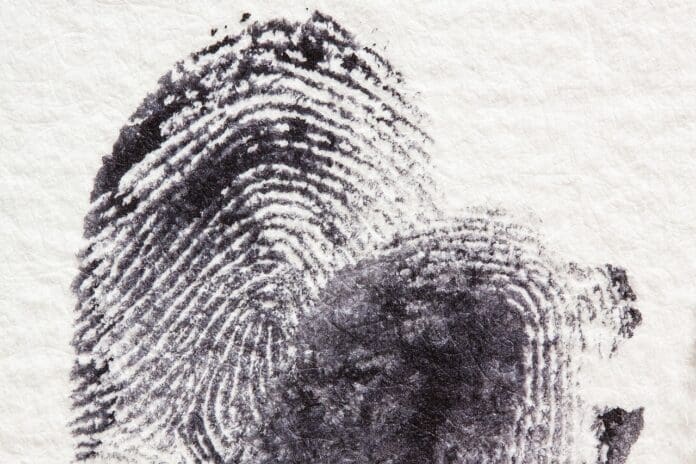This post is also available in:
 עברית (Hebrew)
עברית (Hebrew)
Researchers have developed a groundbreaking nanomaterial that could transform forensic science, particularly in the detection of latent (non-visible) fingerprints. This new technology enables high-quality fingerprint imaging directly at crime scenes, eliminating the need for laboratory analysis.
The innovative nanoparticle, developed through research at Diamond’s labSAXS, combines materials such as MCM-41, chitosan, and dansylglycine. These nanoparticles possess unique properties that allow them to adhere effectively to fingerprint residues, including older prints. This makes them highly versatile, and capable of working on diverse surfaces like metal, plastic, glass, and even complex items such as polymer banknotes, according to Interesting Engineering.
The new nanoparticles are designed to produce high-quality fingerprint images that meet the UK Home Office standards for successful identification. The advanced imaging capability captures finer details of the fingerprint, greatly aiding forensic investigations by enhancing the clarity and usefulness of latent fingermarks.
The study, published in the Royal Society of Chemistry, highlights the advantages of this new nanomaterial. Researchers utilized Small-Angle X-ray Scattering (SAXS) techniques at Diamond to validate the results. Professor Adriana Ribeiro from the Federal University of Alagoas explained the novelty of their approach, stating that there are few studies employing chitosan for detecting latent fingerprints and that this is the first known application of hierarchically structured MSNs modified with chitosan for such purposes. The research team exploited MCM-41’s high surface area and modification capabilities to enhance the interaction between the development reagent and fingerprint residue.
The nanostructured hybrid material, MCM-41@chitosan@dansylglycine, integrates mesoporous silica nanoparticles with a fluorescent dye and chitosan—a polysaccharide derived from crustacean exoskeletons. This combination significantly improves the visualization of latent fingermarks on surfaces with varied chemical compositions, topographies, and optical characteristics.
Traditional fingerprint development methods, which rely on optical, physical, and chemical processes, often have limitations, particularly under challenging conditions. This new nanomaterial addresses these issues by providing a versatile and effective solution for visualizing fingerprints in a range of environments.
Professor Robert Hillman of the University of Leicester emphasized that the study aimed to create a highly adaptable latent fingermark visualization material. The nanoparticles were tested on a broad range of surfaces and conditions, with the majority of enhanced images showing sufficient detail for forensic comparison. Diamond Light Source CEO Prof. Gianluigi Botton noted that this advancement in nanomaterials represents a significant leap forward in forensic science, potentially reshaping how evidence is processed in the future.


























